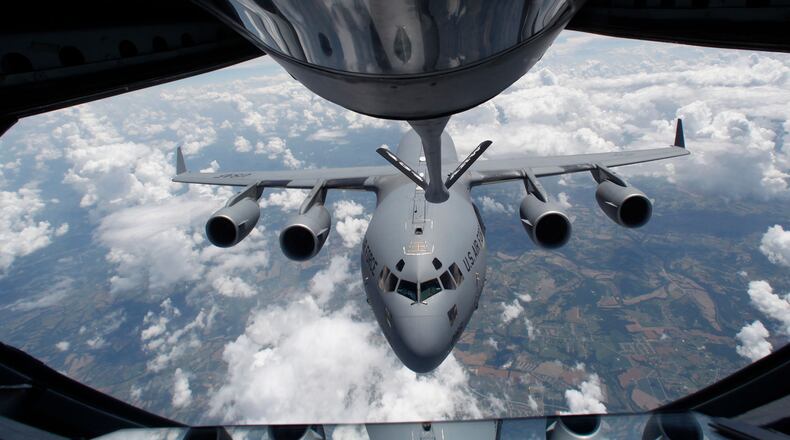“The analysis says what every airmen already knows,” Wilson said. “The Air Force is too small for what the nation is asking us to do. We have 312 operational squadrons today. The Air Force We Need has 386 operational squadrons by 2030.”
» RELATED: Wright-Patt active shooter scare remains unclear a month later
Wilson said the analysis of the 386 squadrons needed to support this strategy is based on estimates of the expected threat by 2025 to 2030. At the end of the Cold War, the Air Force had 401 operational squadrons, she said.
“Today, we are the best Air Force in the world,” Air Force Chief of Staff Gen. David L. Goldfein said. “Our adversaries know it. They have been studying our way of war and investing in ways to take away those advantages. This is about how we stay in front.”
Wilson said the Air Force chose to focus on operational squadrons — fighter and bomber squadrons, attack and special operations, space, cyber, tanker, airlift and other frontline units — because they’re the core fighting units of the Air Force.
» NEWS: How area community colleges are expanding to meet changing student demands
“Our operational squadrons are the clenched fist of American resolve,” she said.
Wilson said the growth of China’s and Russia’s military capabilities must be watched. Wilson said China launched an aircraft carrier, conducted long-range bombing missions that could reach the the U.S. and militarized man-made islands in the South China Sea. She also said Russia ran its largest military exercise in four decades, involving 300,000 troops,.
The analysis, according to Air Force senior leaders, presents an honest assessment of the Air Force U.S. needs to fight and win in future conflicts. The analysis was driven by strategy and not by budget, they said.
“We usually have the dialogue about the Air Force we can afford,” Goldfein said. “This is different. This is about the Air Force we need to present credible options to compete, deter, and if deterrence fails, win.”
Wilson said the understands it will take time to build the support and budget required for the Air Force.
“We aren’t naïve,” she said. “But we have an obligation to be honest with our countrymen and tell them, as those who came before us have done in their time, what should be done… What we must do.”
FIVE FAST READS
• Ohio State wants to prevent Oklahoma from trademarking block ‘O’ logo
• Area college welcomes largest freshmen class in its history
• Turner calls Trump ‘shortsighted’ over cancelled pay raise for federal workers
• Wright State faculty union threatens to strike in October
• Trump’s Space Force proposal could impact NASIC at Wright-Patt
About the Author
